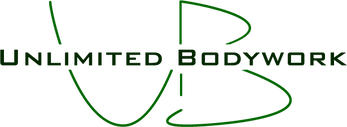|
Frozen Shoulder, Rotator Cuff Tear, Strain, Tendonitis, and Impingement are some of the most common injuries to an area that is very susceptible to getting injured: the shoulder. Most doctors agree that in order to heal from these injuries without surgery you will need rest, blood circulation, a healthy stretching routine, and something to reduce pain and inflammation. It may surprise you, but massage provides all of these things and more. Let us take a look at what causes shoulder injuries and exactly how massage helps with recovery.
Firstly, what is your shoulder? Most would hazard to guess it’s everything from the base and side of your neck to about mid-way down your outer arm. However, it’s a much smaller area then that. Your rotator cuff is a group of muscles and tendons that surround the shoulder joint. The muscles run from your scapula, or shoulder blade, to the humerus, or upper arm bone. This group consists of four muscles. Your supraspinatus is in control of moving your arm up and away from your body, also called abduction. The infraspinatus and teres minor control lateral or outward rotation of your arm, also called external rotation. On the anterior or front side of your shoulder blade is the opposing muscle for your infraspinatus called the subscapularis. This muscle as you can guess does the exact opposite of your infraspinatus, internal rotation of your arm. These four muscles make up your rotator cuff muscles. Now that we have a better understanding of what the shoulder or rotator cuff is, we can better comprehend how it can be injured. If you swing a bat and feel a sharp pain at the end of the movement, the muscle affected is most likely the infraspinatus, as crossing your arm across your body puts a stretch on this muscle. This movement done quickly and violently can cause a strain, an over-stretching and/or tearing of a muscle or a connective tissue connecting muscle to bone. Another injury is impingement which is when muscles get caught, pinched, or rub against the bones of the rotator cuff. This can be caused by repetitive shoulder activities, injury, and aging. Pain may be consistent and increase with lifting or reaching movements and is often seen in swimmers. An injury occurring quite often is overuse. Overuse often leads to frozen shoulder, tendonitis, and/or strains. It is often overlooked, and people push through the pain, ignoring warning signs. Then when the pain gets too bad, a pain spasm cycle starts. Simply put this cycle is when we feel pain, which causes splinting and spasming in the muscle. If the muscle spasming is never relieved, further pain and spasms continue to occur. Of course, this causes further guarding and the cycle continues. The lack of movement causes frozen shoulder as well as a weakening of the muscles. So how can massage help to heal and even prevent these injuries? We must understand what massage does to a muscle. The textbook definition of massage is the manipulation of soft tissue including skin, muscles, and fascia, which is the connective tissue that surrounds your muscles, for the improvement of bodily functions and pain relief. Massage is used to break up adhesions in soft tissues, often referred to as “knots”. When a muscle is inflamed from overuse or an injury, all the individual fibers are in a shortened position and are surrounded by the metabolic byproducts. Your body would rather leave it in this shortened position and just get rid of the most superficial waste so that it can focus on all the other things it needs to do to keep moving throughout the day. It takes much more work to rid the entire muscle of waste and release shortened, worked fibers to their relaxed and neutral position. Massage breaks the pain spasm cycle by flushing out metabolic byproducts and allowing the muscle fibers to be manipulated and released. It facilitates healing of strained muscles by increasing circulation to the area, decreasing inflammation by removing waste, and stopping any spasming that is occurring by allowing muscles to relax into their neutral state. The manipulation of the connective tissue around the joint where muscles attach improves blood flow and prevents adhesions from forming in the rotator cuff joint as it heals. Injury prevention is another great benefit of massage as it keeps muscles pliable and in a neutral state, able to respond as they should and not get over worked, strained, torn, or inflamed. An easy way to think of injury prevention is this: if you drop a spaghetti noodle on the ground when it is uncooked and stiff it will break, but if you drop it in it’s cooked flexible and pliable state it will remain intact. Our muscles are supposed to be soft and flexible, able to take on whatever job we need them to in our daily lives. When they are hard and immobile, they are much more susceptible to injury. Here at Unlimited Bodywork it is our goal to ensure your body is performing the way you need it to in your daily life. Whether that involves climbing stairs all day, typing away at the computer, or driving for long periods, your muscles need to be released in order to do what you demand of them. Call today to set up your appointment to get your shoulders, and your body, moving without injury. Comments are closed.
|
JenniferMassage Therapist and owner of Unlimited Bodywork. Archives
February 2024
Categories |

 RSS Feed
RSS Feed
